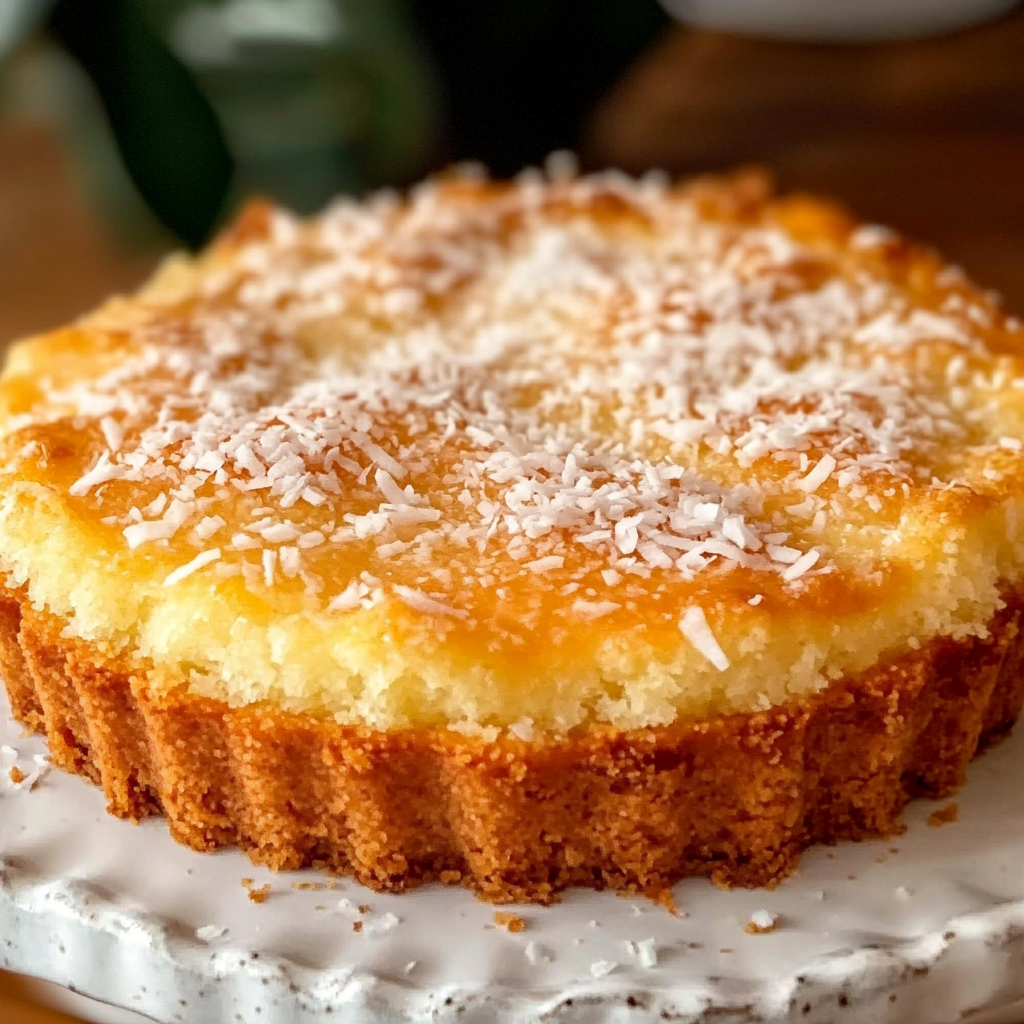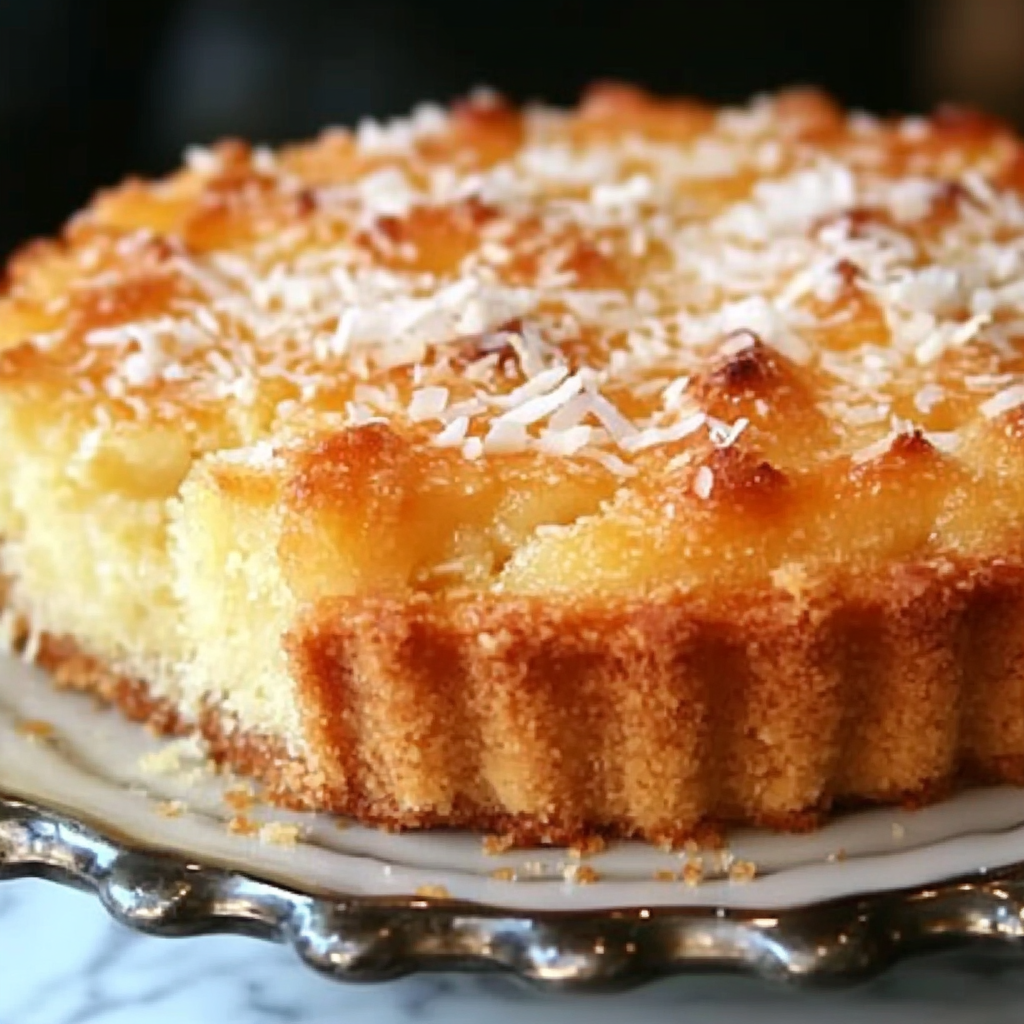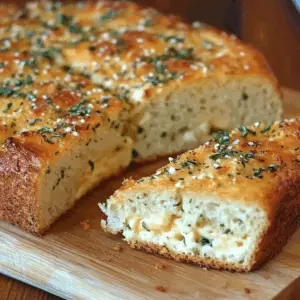Few desserts strike the perfect balance between richness and refreshing citrus flavor quite like an orange pound cake. With its buttery crumb, vibrant zest, and tender texture, this cake is a delightful twist on the classic pound cake. Whether served with a morning cup of coffee or presented at an afternoon tea, its subtle tang and elegant finish make it a go-to treat for any occasion.
Unlike other cakes, the orange pound cake draws its distinct character from both the zest and juice of fresh oranges. The infusion of citrus not only enhances the flavor but also contributes to the cake’s moist texture and aromatic quality. This elevates it beyond a basic pound cake into a sophisticated dessert that feels indulgent yet light.
The appeal of citrus-infused bakes dates back centuries. The use of orange in baking has Mediterranean roots and has evolved into a modern-day favorite, especially for those looking to add a fruity punch to a traditional recipe. According to the Wikipedia article on oranges, this fruit has long been a staple in both sweet and savory recipes due to its fragrance, flavor complexity, and natural sweetness.
On Pinterest, recipes like this citrus glaze idea show how versatile orange pound cake can be—finished with a drizzle of zesty glaze or kept plain for a more rustic appeal. For those looking to explore more brunch-friendly desserts, this collection of brunch ideas offers further inspiration.
This recipe combines classic baking techniques with fresh ingredients to create a cake that’s both comforting and contemporary. Whether you’re a seasoned baker or a weekend enthusiast, this orange pound cake promises flavor, simplicity, and undeniable charm.
The Origin and Evolution of Pound Cake
The pound cake traces its roots back to 18th-century Europe, where its name derived from its original formula: a pound each of flour, butter, sugar, and eggs. This simple ratio not only made it easy to remember but also ensured a dense, rich texture that characterized the early versions of the cake. As baking science and culinary techniques advanced, so did the pound cake, gradually evolving into the lighter, more flavorful variations we enjoy today.
Originally, pound cakes were baked in large quantities and meant to serve multiple people, often during gatherings or celebrations. Their sturdy structure allowed them to be stored for days, making them an ideal option before modern refrigeration. Over time, bakers began to modify the base recipe to suit regional tastes and ingredient availability. One notable transformation was the introduction of leavening agents like baking powder, which helped lighten the traditionally heavy crumb. Learn more about how baking powder works as a leavening agent in this Wikipedia article on baking powder.
As global trade expanded access to new ingredients, citrus fruits such as lemons and oranges made their way into pound cake recipes. The use of citrus brought not only flavor but also a touch of brightness to the otherwise rich and buttery cake. The shift to incorporate flavors like orange aligns with broader culinary trends that embrace the balance between sweetness and acidity, creating more complex flavor profiles. According to the Wikipedia page on pound cake, these variations eventually became as popular as the original version, particularly in American and European kitchens.
Today’s orange pound cake is a result of centuries of adaptation. The inclusion of orange zest, orange juice, and yogurt or sour cream creates a moist, flavorful crumb that speaks to the evolution of baking from a purely functional task to a creative and expressive craft. It bridges the old with the new—respecting traditional techniques while embracing fresh flavors.
On visual platforms like Pinterest, this shift is evident in pins like teatime cake inspiration that showcase beautifully glazed citrus cakes served with fresh herbs or fruits. These modern interpretations demonstrate how the humble pound cake continues to inspire bakers across generations and cultures.
Why Orange Is the Perfect Flavor for Pound Cake
When it comes to enhancing classic baked goods, orange is one of the most versatile and refreshing flavors. It adds a bright, citrusy note that cuts through the richness of butter and eggs, making it an ideal companion to the dense, moist structure of a pound cake. The natural acidity of orange juice not only sharpens the overall taste but also activates baking powder, contributing to a lighter, fluffier texture.
The key to achieving that signature zesty flavor lies in using both orange zest and fresh orange juice. The zest, which contains aromatic oils, provides a concentrated burst of flavor that artificial extracts often fail to replicate. Meanwhile, the juice introduces subtle sweetness and moisture, enhancing both the texture and the aroma of the cake.
According to the Wikipedia entry on oranges, oranges are among the most commonly used fruits in baking and cooking due to their well-balanced flavor and natural pairing with dairy ingredients like butter and cream. This makes them an ideal ingredient for desserts where richness needs to be balanced with freshness.
Pinterest boards like citrus dessert recipes highlight how orange desserts have grown in popularity for both their visual appeal and their flavor complexity. Orange not only complements the buttery base of the pound cake but also works well with add-ins like cranberries, poppy seeds, or even a light glaze—making it suitable for everything from everyday baking to elegant holiday tables.
Beyond flavor, the color of orange zest and juice adds a subtle golden hue to the cake, making it visually inviting. Whether served plain or drizzled with a glaze, orange pound cake offers a beautiful contrast between rich cake and citrusy brightness—a pairing that continues to delight bakers and dessert lovers alike.
Essential Ingredients and Their Roles
Creating the perfect orange pound cake relies on a precise combination of staple baking ingredients, each serving a unique function to build the cake’s structure, flavor, and moisture. When balanced correctly, these ingredients come together to create a cake that’s rich, aromatic, and satisfyingly soft.
-
All-purpose flour provides the foundation. It gives the cake structure while allowing for a tender crumb. For pound cake, a medium-protein flour works best to avoid a dense, rubbery texture.
-
Baking powder, a leavening agent, introduces air into the batter, giving the cake a lighter lift. While traditional pound cakes didn’t use any leavening beyond eggs, modern recipes benefit from a small amount for a softer texture. More about baking powder’s role is covered here on Wikipedia.
-
Unsalted butter adds richness and moisture. Creaming it properly with sugar introduces air, setting the stage for a fluffy batter. Using high-quality butter intensifies flavor.
-
Granulated sugar not only sweetens the cake but also contributes to its texture by aerating the butter during the creaming process.
-
Eggs are crucial for structure and stability. They bind the ingredients while enriching the cake’s flavor and ensuring a moist interior.
-
Orange zest is key for the intense citrus aroma. It contains essential oils that permeate the batter, giving the cake its distinct orange fragrance.
-
Fresh orange juice brings acidity and additional moisture. Unlike bottled juice, fresh juice lacks preservatives and has a brighter, fresher taste. According to this Wikipedia article, fresh oranges retain more nutrients and oils.
-
Plain yogurt or sour cream introduces a subtle tang that balances sweetness and helps tenderize the crumb, ensuring the cake remains moist even days after baking.
-
Vanilla extract enhances all the other flavors and adds a warm, rounded note to the citrus profile.
Optional:
-
Powdered sugar and fresh orange juice for a glaze. This simple mixture creates a sweet, slightly tangy topping that complements the cake’s richness and amplifies the citrus flavor.
Inspiration for citrus-themed toppings and glazes can be found on this Pinterest board, showcasing variations from simple drizzles to decorative finishes.
Together, these ingredients transform a traditional dessert into a refreshing twist that’s packed with flavor and visual appeal.
Tips for Choosing the Best Oranges
Choosing the right oranges is vital for making a pound cake that’s bursting with fresh flavor and natural zest. Not all oranges are created equal when it comes to baking, so selection matters.
-
Navel oranges are a popular choice due to their sweetness and availability year-round. They’re seedless and easy to zest, making them ideal for cakes.
-
Valencia oranges, often juicier, are great for extracting maximum flavor, especially when a stronger citrus profile is desired.
-
Blood oranges can add a pinkish hue and a slightly more complex, berry-like taste, but they’re typically more seasonal.
To get the most from the zest:
-
Choose organic oranges whenever possible. Their skins are free from wax and pesticides, which is especially important when using the zest.
-
Use a microplane or fine grater to zest only the colored part of the peel—the white pith underneath is bitter.
These small choices dramatically improve the outcome, delivering an orange pound cake that feels as vibrant and natural as it tastes.
For creative ways to present orange-based desserts, explore this Pinterest collection on citrus desserts for added visual inspiration.

Ingredient Substitutions & Variations
This orange pound cake recipe is both versatile and adaptable, allowing for customizations based on dietary preferences or available ingredients.
Dairy Alternatives:
-
Use coconut yogurt or dairy-free sour cream for a lactose-free version.
-
Substitute plant-based butter in equal measure for a vegan-friendly twist (along with flax eggs).
Flavor Additions:
-
Add 1–2 tablespoons of poppy seeds for a texture contrast and subtle nuttiness.
-
Mix in dried cranberries or chocolate chips for extra indulgence.
-
Swap orange for lemon zest and juice to make a lemon pound cake variation.
Form Factor Variations:
-
Bake in a bundt pan for a decorative presentation.
-
Divide the batter into muffin tins for portable, individual servings.
-
Use a loaf pan for a more traditional shape.
Explore similar ideas and presentations on this Pinterest board about pound cake variations.
Whether you’re adjusting for dietary needs or just want to try something new, these substitutions allow you to personalize your cake without compromising on flavor or texture.
Step-by-Step Instructions to Make Orange Pound Cake
Creating a moist and flavorful orange pound cake is straightforward when following the right technique. Here’s a breakdown of the key steps:
-
Preheat oven to 350°F (175°C). Grease and flour an 8-inch round cake pan or line with parchment paper for easy release.
-
Mix the dry ingredients: In a medium bowl, whisk together 1 ½ cups all-purpose flour, 1 ½ tsp baking powder, and ¼ tsp salt. Set aside.
-
Cream butter and sugar: In a large bowl, beat ½ cup unsalted butter and ¾ cup granulated sugar until light and fluffy—this should take about 3–5 minutes. This step is crucial for texture.
-
Add eggs and flavor: Beat in 2 large eggs one at a time, ensuring each is fully incorporated before adding the next. Then stir in 1 tbsp orange zest and 1 tsp vanilla extract.
-
Incorporate liquid ingredients: Mix in ½ cup fresh orange juice and ½ cup plain yogurt (or sour cream) until smooth. The batter will be slightly loose, but creamy.
-
Combine dry and wet: Gradually add the dry ingredients to the wet, mixing just until combined. Avoid overmixing to keep the cake light.
-
Bake: Pour the batter into the prepared pan and smooth the top. Bake for 30–35 minutes, or until a toothpick inserted in the center comes out clean.
-
Cool: Let the cake cool in the pan for 10 minutes, then transfer to a wire rack to cool completely.
This foolproof method, rooted in classic baking science as detailed in Wikipedia’s guide to baking, ensures consistent results every time.
Optional Orange Glaze for a Finishing Touch
The glaze is simple but makes a big impact. It’s a zesty addition that enhances both the look and flavor of the cake.
Ingredients:
-
½ cup powdered sugar
-
1–2 tbsp fresh orange juice
Instructions:
-
Whisk together the sugar and juice until smooth.
-
Adjust the consistency by adding more juice (for a thinner glaze) or more sugar (for a thicker one).
-
Drizzle over the cooled cake using a spoon or piping bag.
This glaze offers a brilliant sheen and a pop of citrus that takes your cake from everyday to extraordinary. For more glaze inspiration, visit this Pinterest citrus glaze example.
Storage Tips and Shelf Life
To preserve your orange pound cake without sacrificing flavor or texture:
-
Store at room temperature in an airtight container for up to 3 days.
-
Refrigerate for up to one week, especially if glazed.
-
Freeze for up to 3 months. Wrap tightly in plastic wrap and foil; thaw overnight in the fridge before serving.
Avoid refrigerating without sealing properly, as it can dry out the crumb. For longer storage ideas, check out this baking storage guide on flour and baked goods.
Serving Suggestions and Pairings
Orange pound cake shines whether served alone or alongside complementary elements. Here are some ideas:
-
Pair with Earl Grey tea or espresso for a rich contrast.
-
Serve with a dollop of whipped cream or a scoop of vanilla ice cream.
-
Garnish with candied orange peel or fresh berries for a visual and flavor upgrade.
For more teatime inspiration, see this Pinterest post on teatime cake ideas.
Common Mistakes to Avoid
Even the simplest recipes can go wrong if you’re not careful. Avoid these pitfalls for a perfect result:
-
Overmixing the batter, which leads to a tough texture.
-
Using bottled juice, which lacks the acidity and flavor depth of fresh juice.
-
Skipping the zest, which removes the most fragrant element.
-
Under-creaming butter and sugar, resulting in a dense cake.
-
Overbaking, which dries the cake—test early and use a toothpick.
For deeper insight into baking technique errors, explore baking science basics.

FAQs
Can I make orange pound cake ahead of time?
Yes, it stores well for several days and even improves in flavor after a day or two. It’s ideal for prepping before events.
Can I use orange extract instead of fresh orange?
You can, but it won’t provide the same depth. Fresh orange juice and zest give the best results.
How do I keep pound cake moist?
Don’t overbake, and use ingredients like yogurt or sour cream. Storing it properly also helps retain moisture.
Can I use lemon instead of orange?
Absolutely. Swap orange juice and zest with lemon for a lemon pound cake variation.
How long should I beat the batter?
Cream butter and sugar for 3–5 minutes, but mix dry and wet ingredients only until just combined.
Can I bake this in a bundt pan?
Yes, just adjust the baking time—usually 40–50 minutes depending on pan size.
This Orange Pound Cake Is the Zesty Dessert You Need
This orange pound cake is a moist, buttery classic infused with fresh orange zest and juice. Enhanced with yogurt for tenderness and topped with an optional zesty glaze, it’s perfect for brunch, teatime, or dessert.
- Author: Clara
Ingredients
- 1 ½ cups all-purpose flour
- 1 ½ tsp baking powder
- ¼ tsp salt
- ½ cup unsalted butter, softened
- ¾ cup granulated sugar
- 2 large eggs
- 1 tbsp orange zest
- ½ cup fresh orange juice
- ½ cup plain yogurt or sour cream
- 1 tsp vanilla extract
Optional Orange Glaze:
- ½ cup powdered sugar
- 1–2 tbsp fresh orange juice
Instructions
Preheat your oven to 350°F (175°C). Grease and flour an 8-inch round cake pan or line with parchment paper.
In a medium bowl, whisk together the flour, baking powder, and salt.
In a large bowl, cream the butter and sugar together until light and fluffy.
Add the eggs one at a time, beating well after each addition. Mix in the orange zest and vanilla extract.
Stir in the orange juice and yogurt until smooth.
Gradually add the dry ingredients to the wet ingredients, mixing just until combined.
Pour the batter into the prepared pan and smooth the top.
Bake for 30–35 minutes or until a toothpick inserted in the center comes out clean.
Let the cake cool in the pan for 10 minutes, then transfer to a wire rack to cool completely.
For the glaze, mix powdered sugar with orange juice until smooth, then drizzle over the cooled cake if desired.
Notes
-
Use only fresh orange juice and zest for optimal flavor.
-
Don’t overmix the batter once the flour is added to maintain a soft crumb.
-
The cake tastes even better the next day, as the citrus flavor deepens.
-
Store leftovers in an airtight container at room temperature for up to 3 days.





